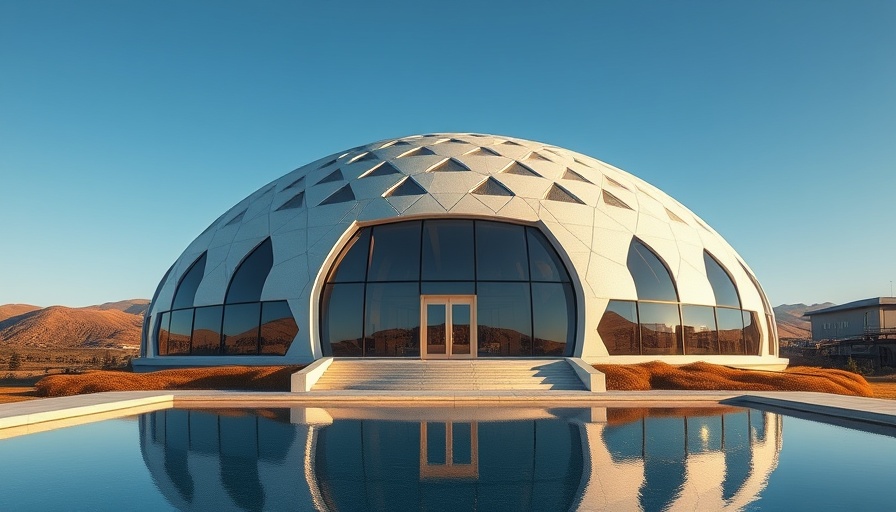
Exploring the Comeback of Domed Architecture
For centuries, domed architecture has made statements across landscapes, demonstrating unique aesthetics and captivating design principles. Recently, this architectural form has enjoyed a resurgence, catching the attention of architects and enthusiasts alike. Whether it’s residential homes or innovative public buildings, domes are proving both functional and visually inspiring.
Working from Within: The Benefits of Dome-Shaped Spaces
As a digital nomad, comfort and efficiency are paramount when creating your workspace. Domed structures provide several ergonomic advantages. The rounded shapes help diffuse sound and create a sense of spaciousness, making them perfect for inspiring productivity. They often include skylights and large windows that bring in natural light, promoting a healthier work environment. This design also encourages teamwork and communication, as the open space promotes movement and interaction.
Global Inspirations: Diverse Dome Structures
From the iconic Pantheon in Rome to modern-day community centers, dome-shaped structures can be found worldwide. Recent notable buildings include the Eden Project in the UK, which demonstrates how domes can blend architecture with sustainable spaces. The futuristic design of the Guggenheim Abu Dhabi exemplifies how contemporary architects are reinterpreting this classic form to promote functionality while engaging viewers with its curvature.
Creating Your Own Dome-Inspired Space
As you contemplate creating a workspace at home or on the go, consider incorporating domed elements. Utilizing rounded furniture or creating spaces with vaulted ceilings can mimic the feelings of openness seen in dome structures. For example, a large, domed tent can become an ideal remote office when set up on your favorite beach or in a serene park. Enhance this space with ergonomic furniture designed for comfort during long hours of work.
Maximizing Ergonomics in Dome-Inspired Workspaces
During the design phase, remember the essential ergonomic principles: maintain good posture, ensure proper equipment height, and take regular breaks to stretch your body. Use standing desks, adjustable chairs, and properly positioned screens to help create a workspace that aligns with your natural body mechanics, even in a dome-style setting. Furthermore, the harmonious design of a dome encourages relaxed movements, reducing the strain associated with traditional, rigid spaces.
The Future of Workspaces: Embracing Innovation
As remote work becomes increasingly prevalent, embracing innovative designs such as domed architecture can redefine the modern workspace. These structures promote collaboration and well-being, making them ideal for both concentrated work and team discussions. The flexibility and fluidity offered by dome design align perfectly with the agile work environments demanded by today's digital nomads.
Conclusion: Finding Inspiration in Geometry
In conclusion, as domed architecture re-establishes itself as a relevant form in today’s design discussions, the potential for creating ergonomic and inspiring workspaces is immense. As we explore how to optimize our remote work experiences, the ideas and principles seen in domed buildings can guide us toward comfort and efficiency. By integrating these concepts into your workspace, you can enhance productivity, well-being, and creativity.
Consider taking steps to incorporate dome-like features into your own workspace. Whether building, redecorating, or merely rethinking your setup, let the insights from domed architecture inspire you. Creating an environment that prioritizes both comfort and creativity can significantly impact your remote work experience.
 Add Row
Add Row  Add
Add 




Write A Comment